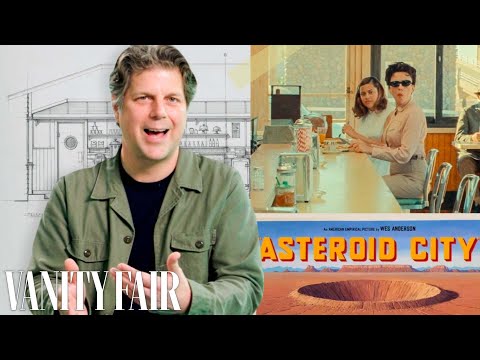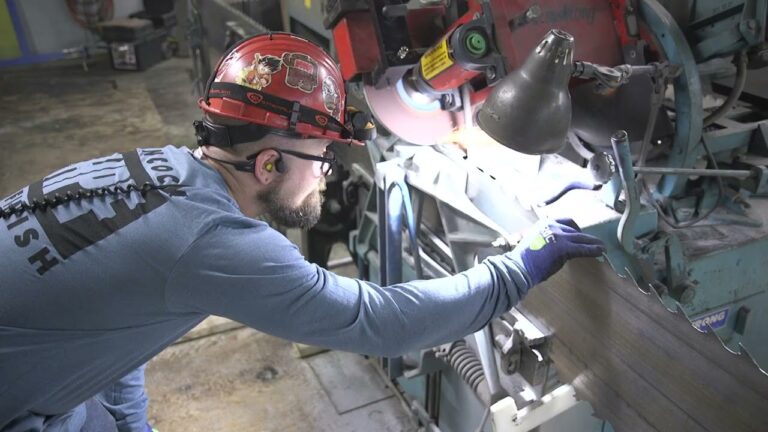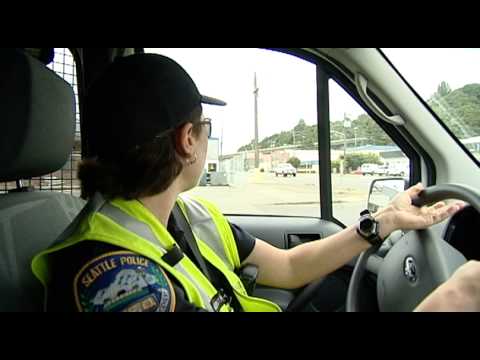Discover the Role of a Production Designer and their Salary!
Production Designer Job Description
A Production Designer is a highly skilled professional responsible for the overall visual look and feel of a film, television show, or theater production. They work closely with the director, cinematographer, and art department to create a cohesive and visually appealing aesthetic.
The main responsibilities of a Production Designer include conceptualizing and designing sets, costumes, props, and other visual elements. They collaborate with the art department to develop sketches, storyboards, and mood boards that communicate their artistic vision to the team. They also oversee the construction and installation of sets, ensuring that they meet the required specifications and timelines.
In addition to their artistic abilities, Production Designers must also possess strong organizational and communication skills. They need to effectively manage budgets, coordinate with various departments, and ensure that all design elements align with the overall creative vision.
Production Designer Salary
The salary of a Production Designer can vary depending on factors such as experience, location, and the scale of the production. On average, a Production Designer can earn between $50,000 to $150,000 per year. However, top-tier Production Designers working on big-budget films or television shows can earn considerably higher salaries.
Experienced Production Designers who have a proven track record of successful projects and a strong reputation in the industry can command higher fees. Additionally, working in major entertainment hubs such as Hollywood or New York City can also lead to higher salaries due to the higher cost of living and increased demand for experienced professionals.
Overall, a career as a Production Designer can be financially rewarding for those who possess a combination of artistic talent, technical skills, and industry experience.

Production Designer Job Description Template
Production Designer Job Description
A Production Designer is a key member of the film, television, or theater production team responsible for creating the visual concept and design of a project. They work closely with the director, art director, and other creative professionals to develop the overall look and feel of the production.
The main responsibilities of a Production Designer include conceptualizing and designing the sets, costumes, props, and overall visual style of the production. They collaborate with the director and art director to understand the vision and requirements of the project and translate them into tangible designs. This involves conducting extensive research, sketching ideas, creating storyboards, and generating detailed plans and drawings.
Additionally, a Production Designer is in charge of managing the production design team and overseeing the construction, installation, and decoration of the sets. They work closely with the art department, set decorators, costume designers, and other professionals to ensure that the designs are executed accurately and within the given budget and timeline.
Creativity, attention to detail, and excellent communication skills are crucial for this role. Production Designers should be proficient in using design software and have a strong understanding of art history, architecture, and visual storytelling. They should also be able to collaborate effectively with other team members and manage multiple tasks simultaneously.
In summary, a Production Designer plays a vital role in bringing the visual elements of a production to life. Their creative vision and technical expertise contribute to the overall success of the project by creating visually stunning and immersive experiences for the audience.
Production Designer Responsibilities
- Creating visual concepts and designs for film, television, or theater productions.
- Collaborating with directors, producers, and other creative team members to determine the overall look and feel of a production.
- Researching and gathering reference materials and inspiration for design concepts.
- Developing detailed production designs, including set designs, props, costumes, and visual effects.
- Creating scale models or computer-generated mock-ups to present design concepts to the production team.
- Working with art directors and construction teams to bring the production designs to life.
- Overseeing the selection and procurement of materials, props, and set decorations.
- Collaborating with cinematographers and lighting designers to ensure the visual elements of the production are cohesive and effective.
- Managing budgets and resources to ensure the production design stays within financial constraints.
- Supervising the set dressing and decoration during filming or stage production.
- Maintaining a thorough understanding of historical, cultural, and artistic influences to inform design decisions.
- Keeping up-to-date with industry trends and new technologies related to production design.
- Ensuring the safety and functionality of all production designs and sets.
- Providing guidance and support to the production team to ensure the successful execution of the design vision.
Production Designer Requirements
- Experience in production design or related field
- Strong artistic and creative skills
- Knowledge of design software and tools
- Ability to collaborate with directors, producers, and other members of the production team
- Good communication and problem-solving skills
- Attention to detail
- Flexibility and adaptability to work in different settings and environments
- Ability to work under tight deadlines and manage multiple projects simultaneously
- Knowledge of set construction and materials
- Understanding of visual storytelling and the ability to create a cohesive visual style
How Much Does A Production Designer Make?
Production Designer Salary
| City | Salary |
|---|---|
| New York | $80,000 |
| Los Angeles | $75,000 |
| London | £45,000 |
| Toronto | $70,000 |
A production designer’s salary can vary depending on factors such as experience, location, and the size of the production company. In major cities like New York and Los Angeles, production designers can earn an average salary of around $75,000 to $80,000 per year. In London, the average salary is approximately £45,000. It’s important to note that these figures are just estimates and individual salaries may differ. Additionally, production designers may also receive benefits and bonuses as part of their compensation package. Overall, the salary of a production designer reflects their skills, expertise, and the demand for their services in the industry.
Production Designer Salaries by Country
Top Paying Countries for Production Designer
| Country | Average Salary (USD) |
|---|---|
| United States | 100,000 |
| Switzerland | 90,000 |
| Australia | 80,000 |
| Canada | 75,000 |
| United Kingdom | 70,000 |
Production designers are highly valued in the entertainment industry, and their salaries vary depending on the country they work in. According to recent data, the United States offers the highest average salary for production designers, with an average of $100,000 per year. Switzerland follows closely behind with an average salary of $90,000, while Australia, Canada, and the United Kingdom offer average salaries of $80,000, $75,000, and $70,000 respectively. These top paying countries attract talented production designers from around the world, providing them with lucrative opportunities and recognition for their creative contributions.
A video on the topic Production Designer
Interview Questions for Production Designer
1. Can you explain the role of a Production Designer?
A Production Designer is responsible for creating the overall visual concept and design of a film or television production. They work closely with the director and other key members of the production team to develop the artistic vision and bring it to life.
2. What skills and qualifications are important for a Production Designer?
A Production Designer should have excellent artistic and creative abilities, a strong understanding of visual storytelling, and good communication skills. They should also have knowledge of design software, set construction, and budgeting.
3. How do you approach the process of designing a set for a production?
I begin by thoroughly reading the script and discussing it with the director to understand their vision. Then, I research and gather visual references, create concept sketches, and collaborate with other departments to ensure the design is cohesive with the overall production.
4. Can you give an example of a challenging project you worked on as a Production Designer?
One challenging project I worked on was a period drama set in the 18th century. It required extensive research to accurately recreate the historical setting within the budget constraints. I had to find creative solutions and collaborate closely with the art department to achieve the desired look.
5. How do you manage the budget for set design?
I work closely with the production team to determine the budget for the set design. I prioritize the important elements and find cost-effective solutions without compromising the quality of the design. Regularly reviewing and adjusting the budget throughout the production is also crucial.
6. How do you collaborate with other departments during the production process?
I believe effective collaboration is essential for a successful production. I regularly communicate and coordinate with the art department, cinematographer, costume designer, and other key departments to ensure the visual elements align and support each other.
7. How do you stay updated with the latest design trends and techniques?
I constantly engage in research, attend industry events, and follow design publications and websites. I also participate in workshops and training programs to learn new techniques and stay updated with the latest trends in set design.
8. Can you explain the importance of attention to detail in production design?
Attention to detail is crucial in production design as it helps create a believable and immersive world for the audience. The small details contribute to the overall authenticity and enhance the storytelling. It also reflects the professionalism of the production.
9. How do you handle creative differences with the director or other team members?
I believe in open and constructive communication when dealing with creative differences. I listen to their perspective, offer my own insights, and try to find a common ground that aligns with the project’s vision. It’s important to remember that collaboration often leads to the best creative solutions.
10. Can you describe a project where you had to work under tight deadlines?
I once worked on a commercial shoot that had a very tight deadline. To meet the deadline, I had to prioritize tasks, delegate responsibilities, and ensure effective communication within the team. We managed to successfully deliver the set design on time without compromising the quality.
The Best Universities For The Production Designer Profession.
- Royal College of Art (RCA)
- University of Southern California (USC)
- New York University – Tisch School of the Arts
- London College of Communication
- American Film Institute (AFI)
- California Institute of the Arts (CalArts)
- Savannah College of Art and Design (SCAD)
- University of California – Los Angeles (UCLA)
- Pratt Institute
- Rhode Island School of Design (RISD)






